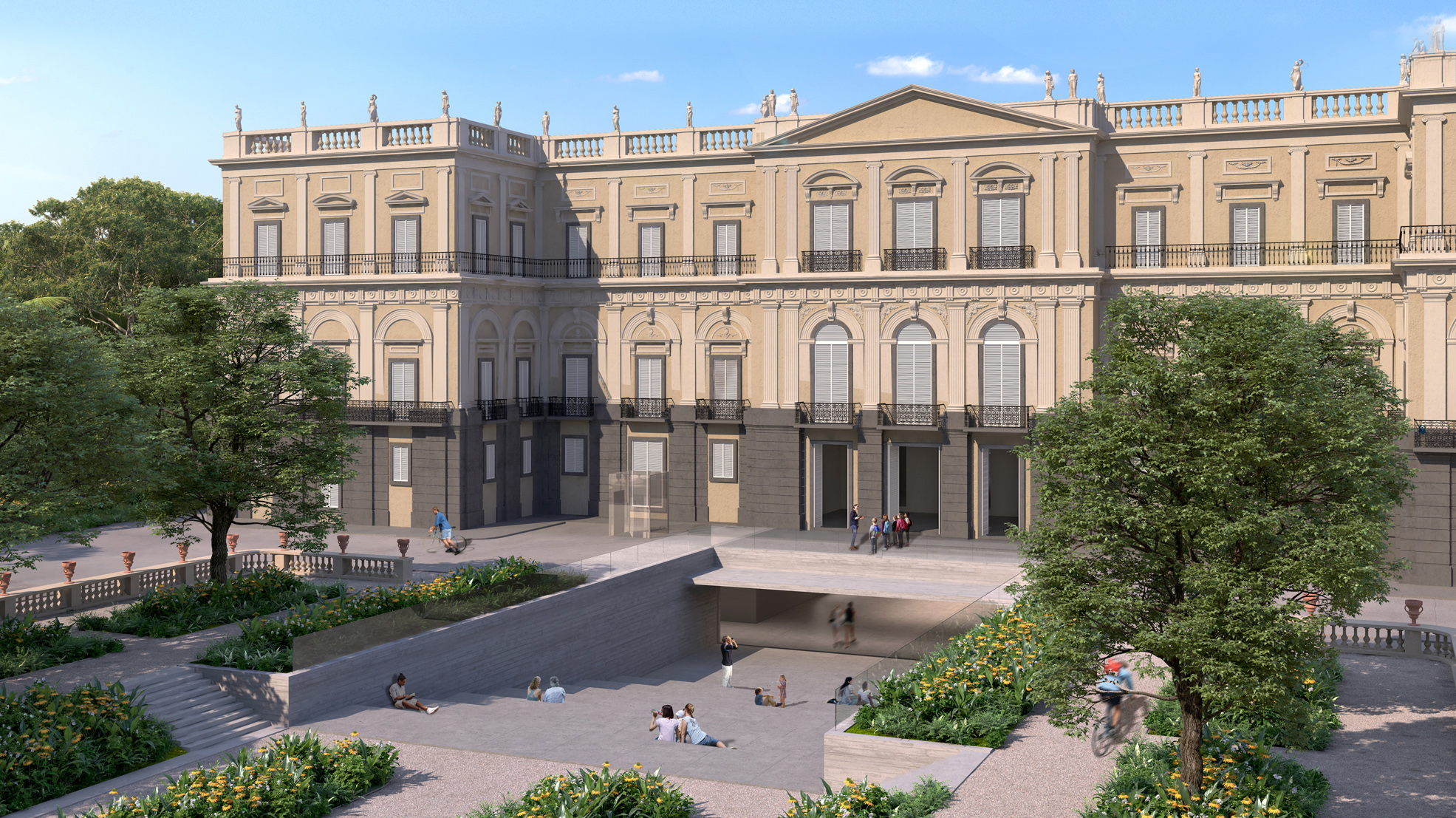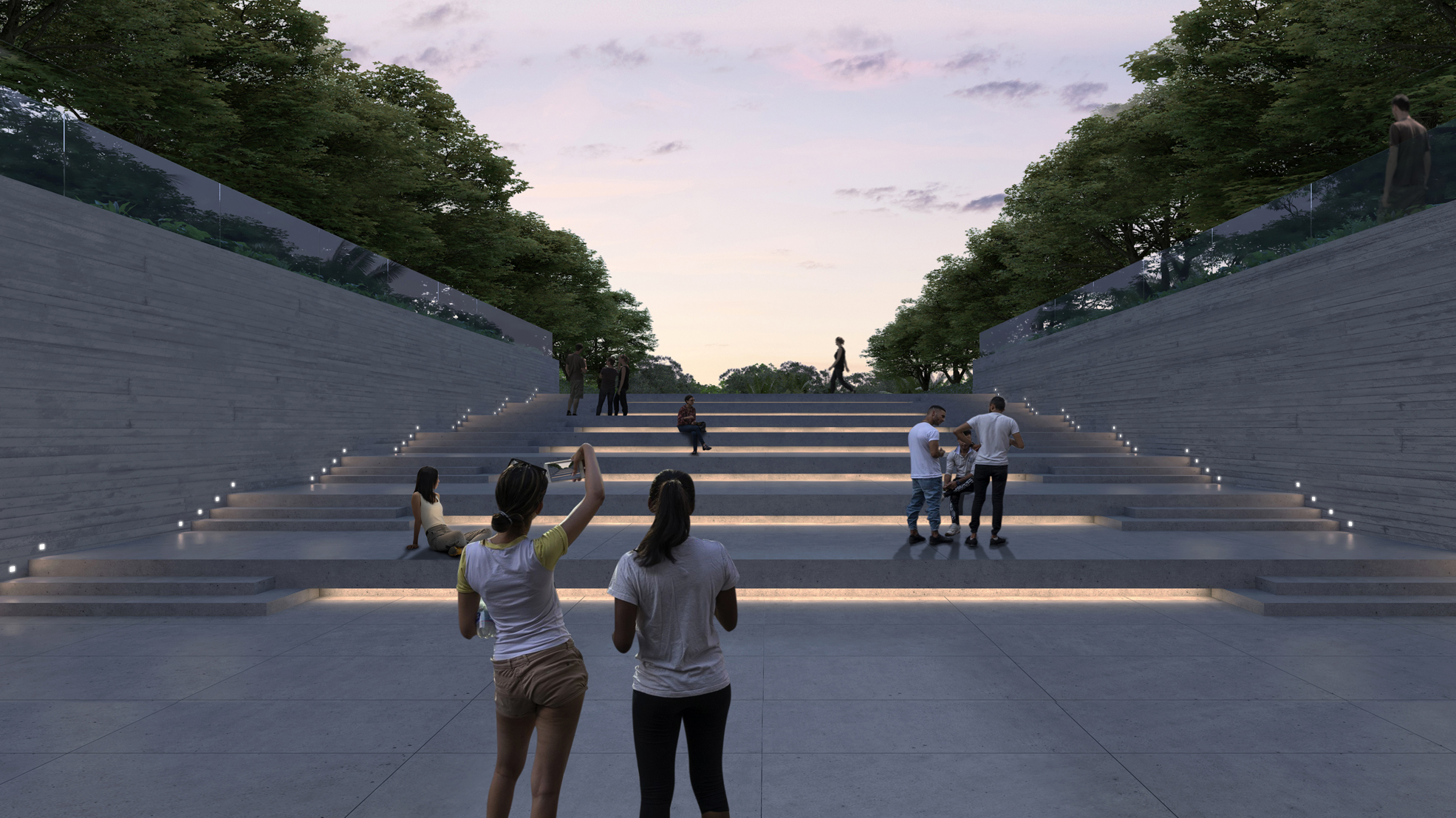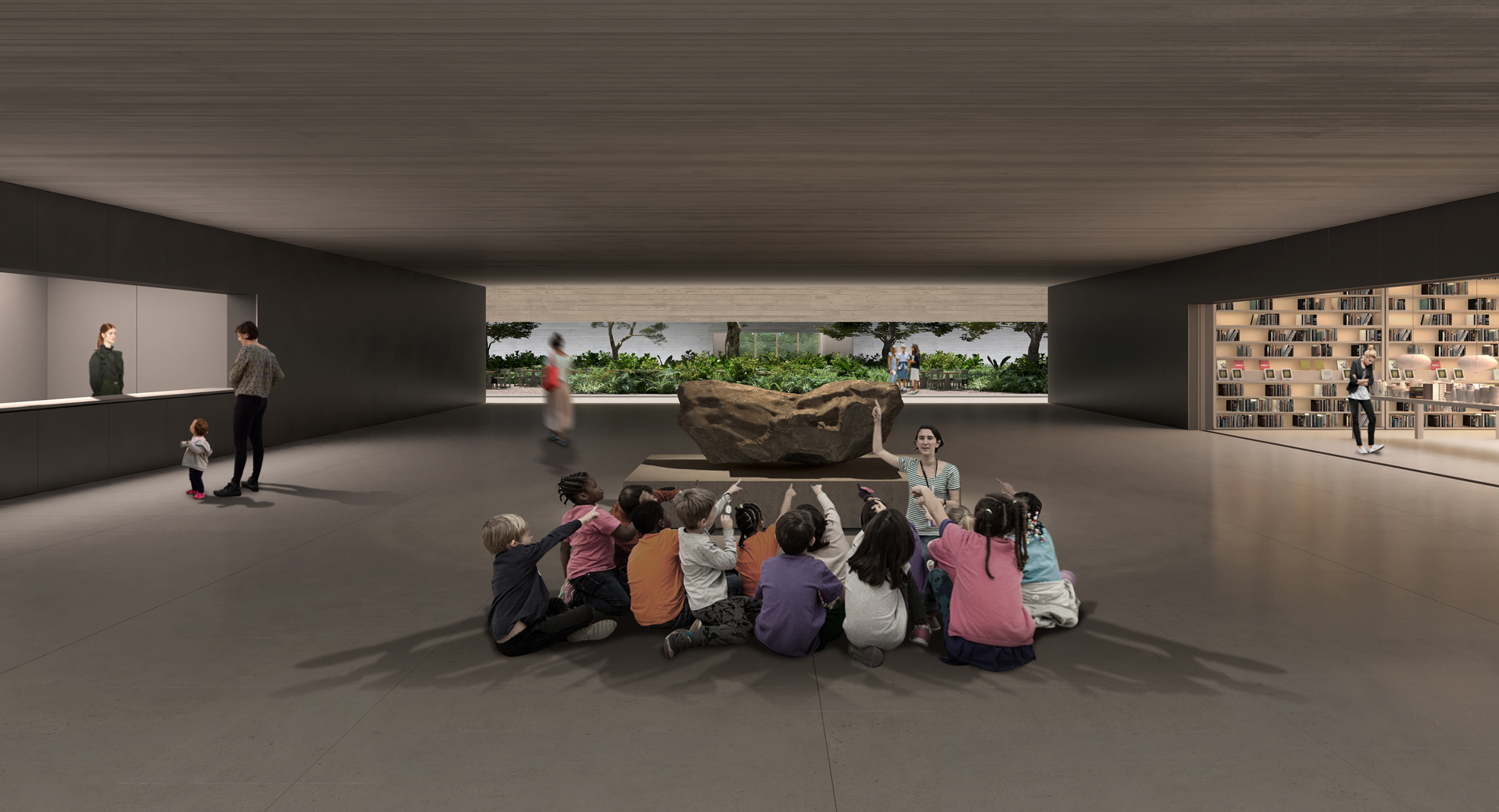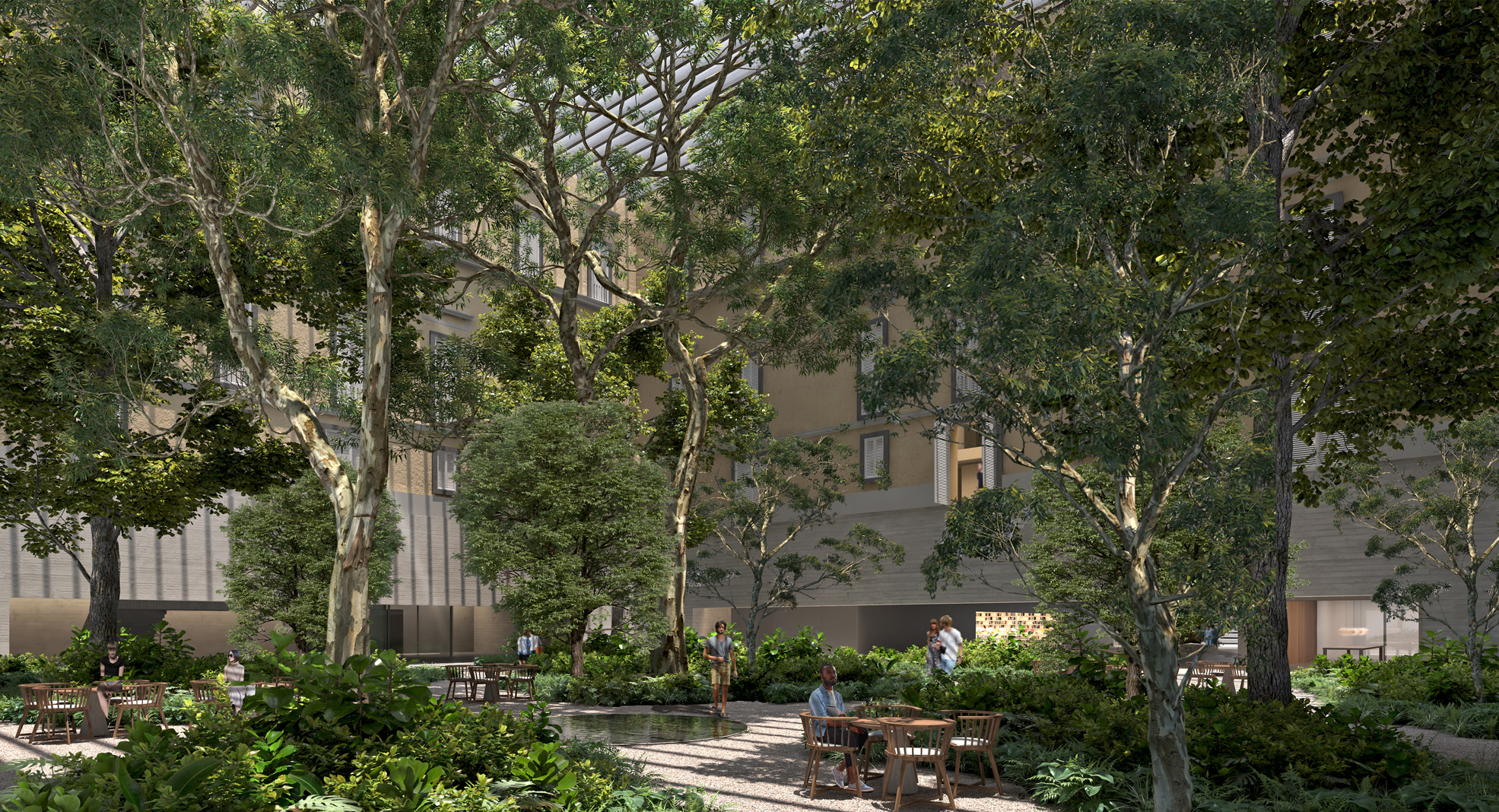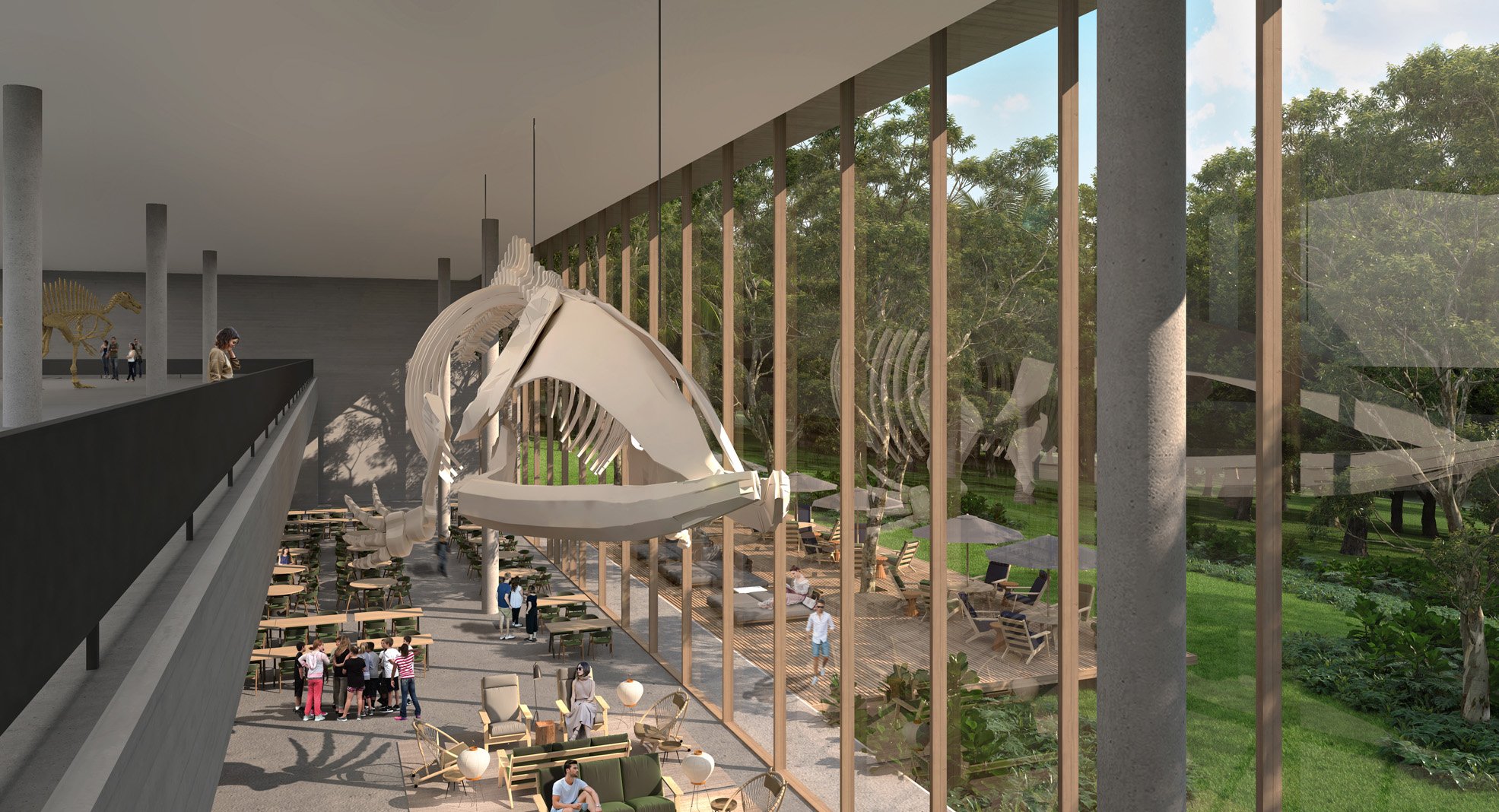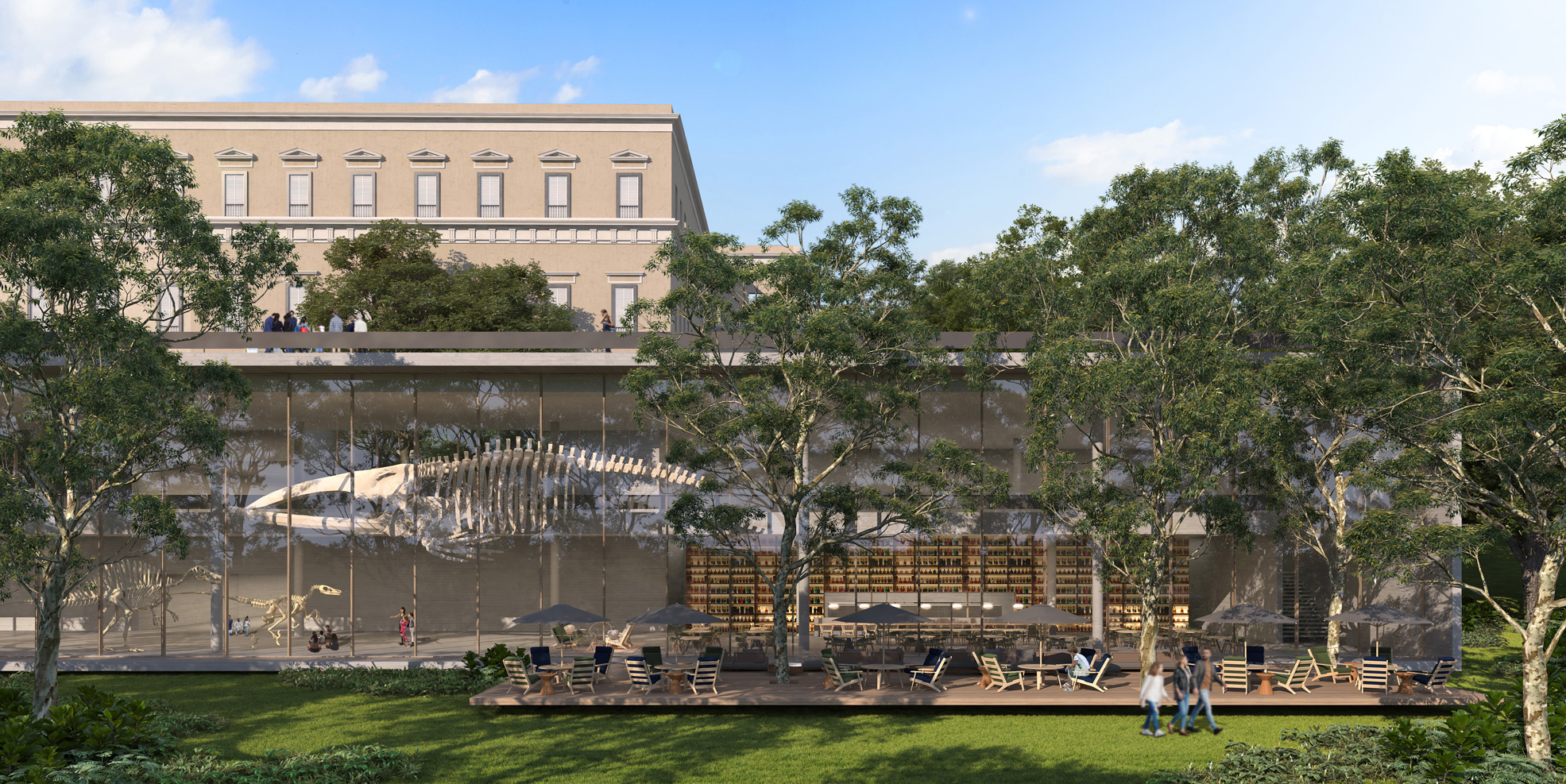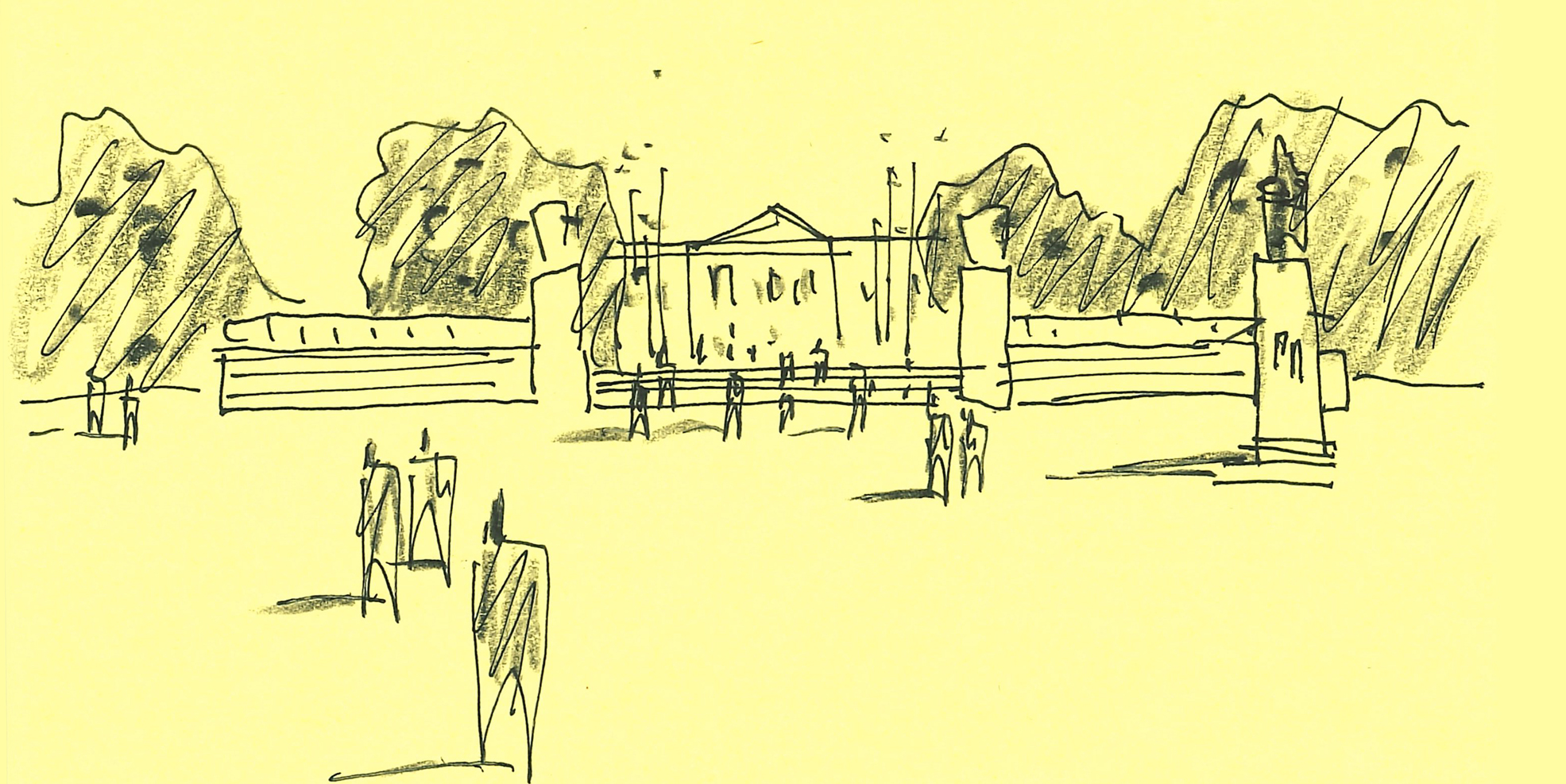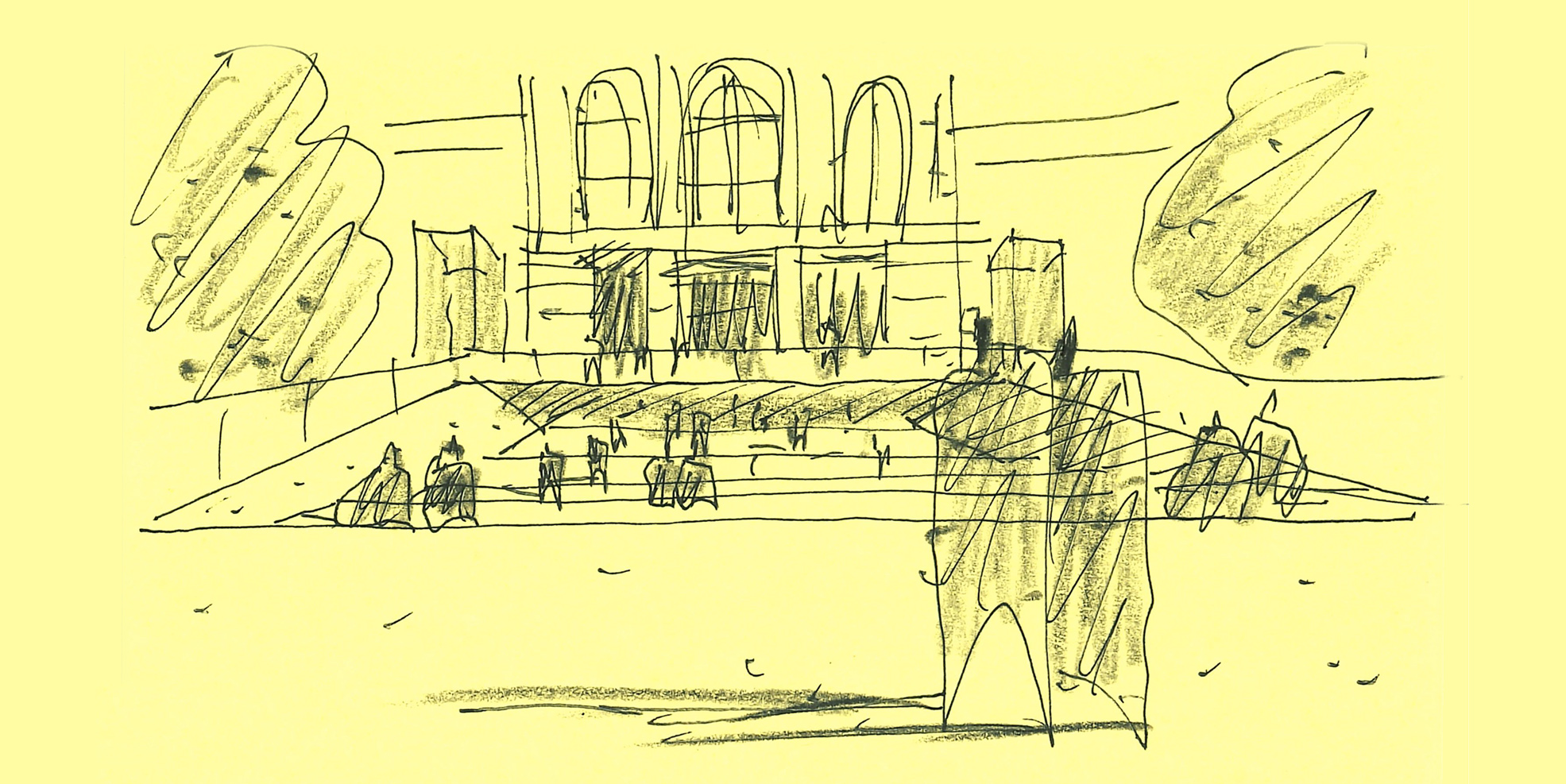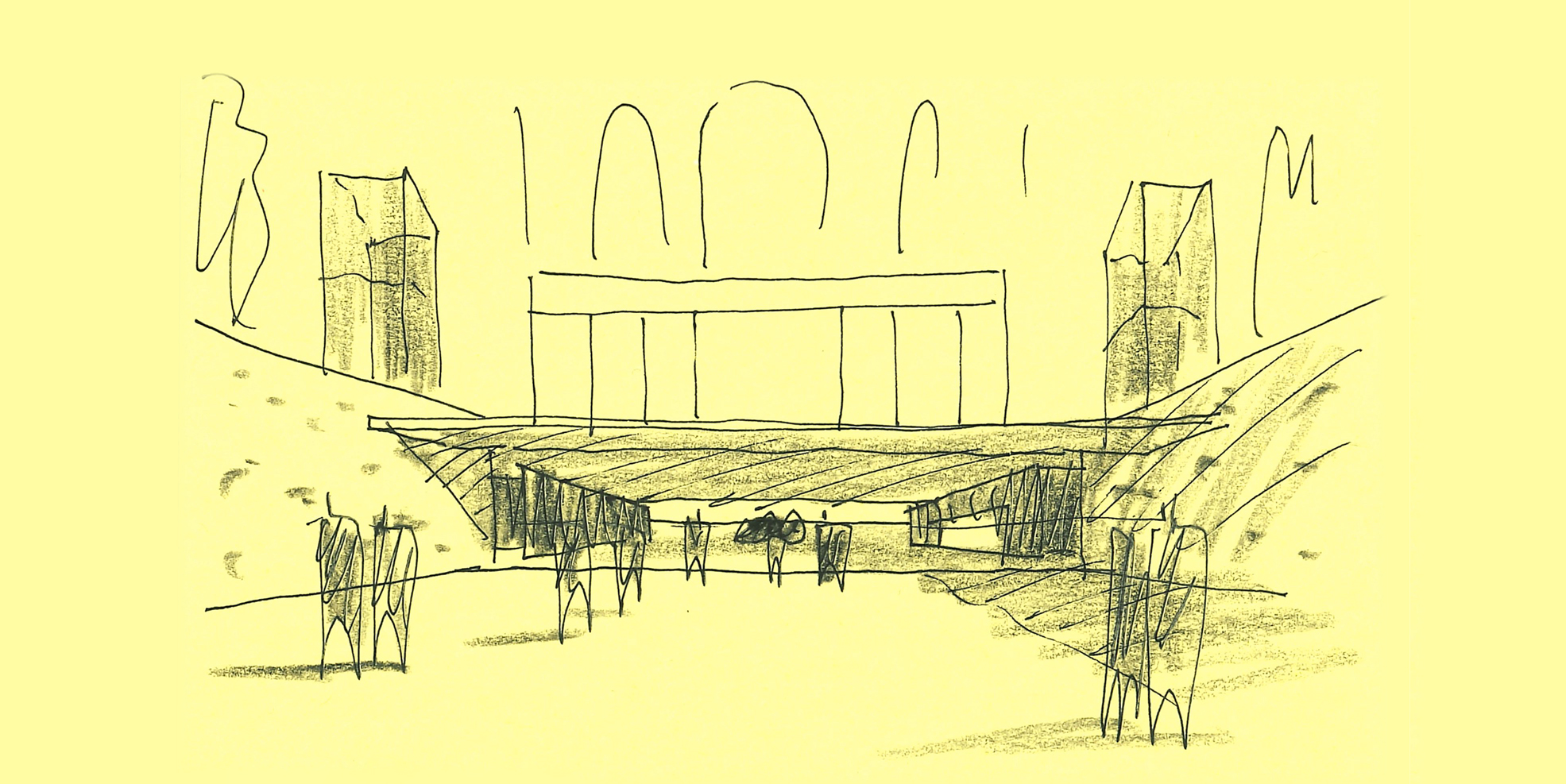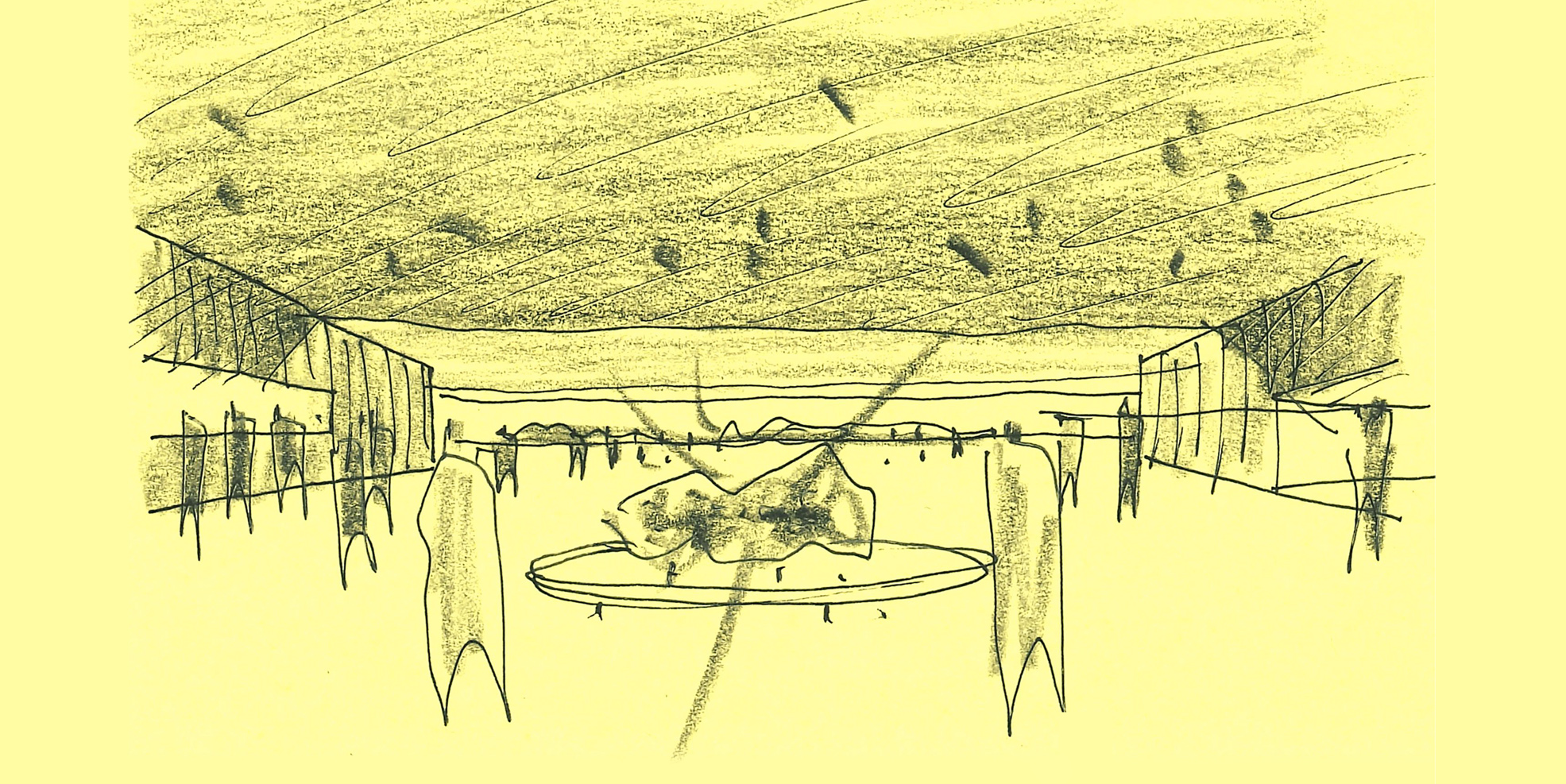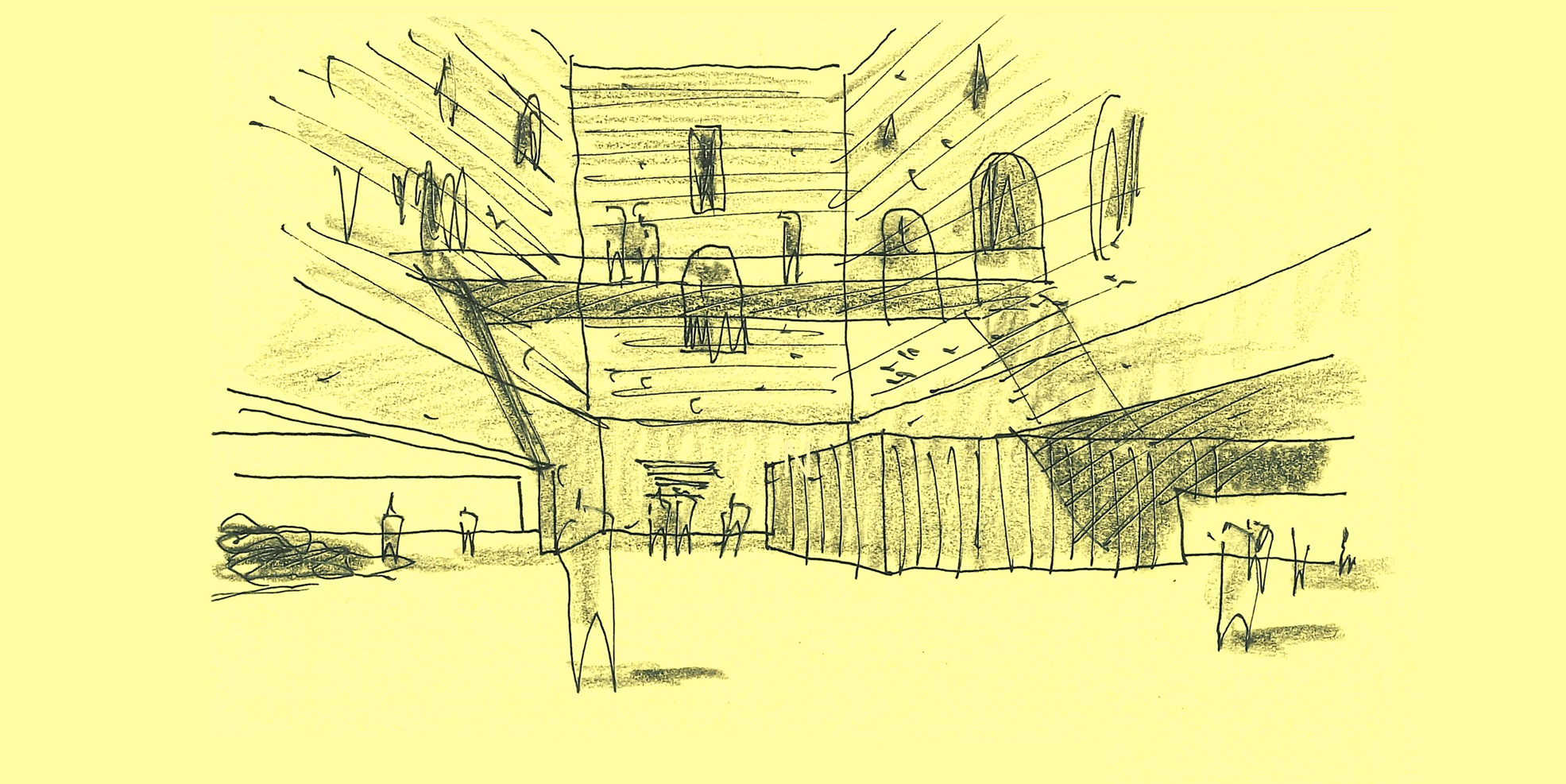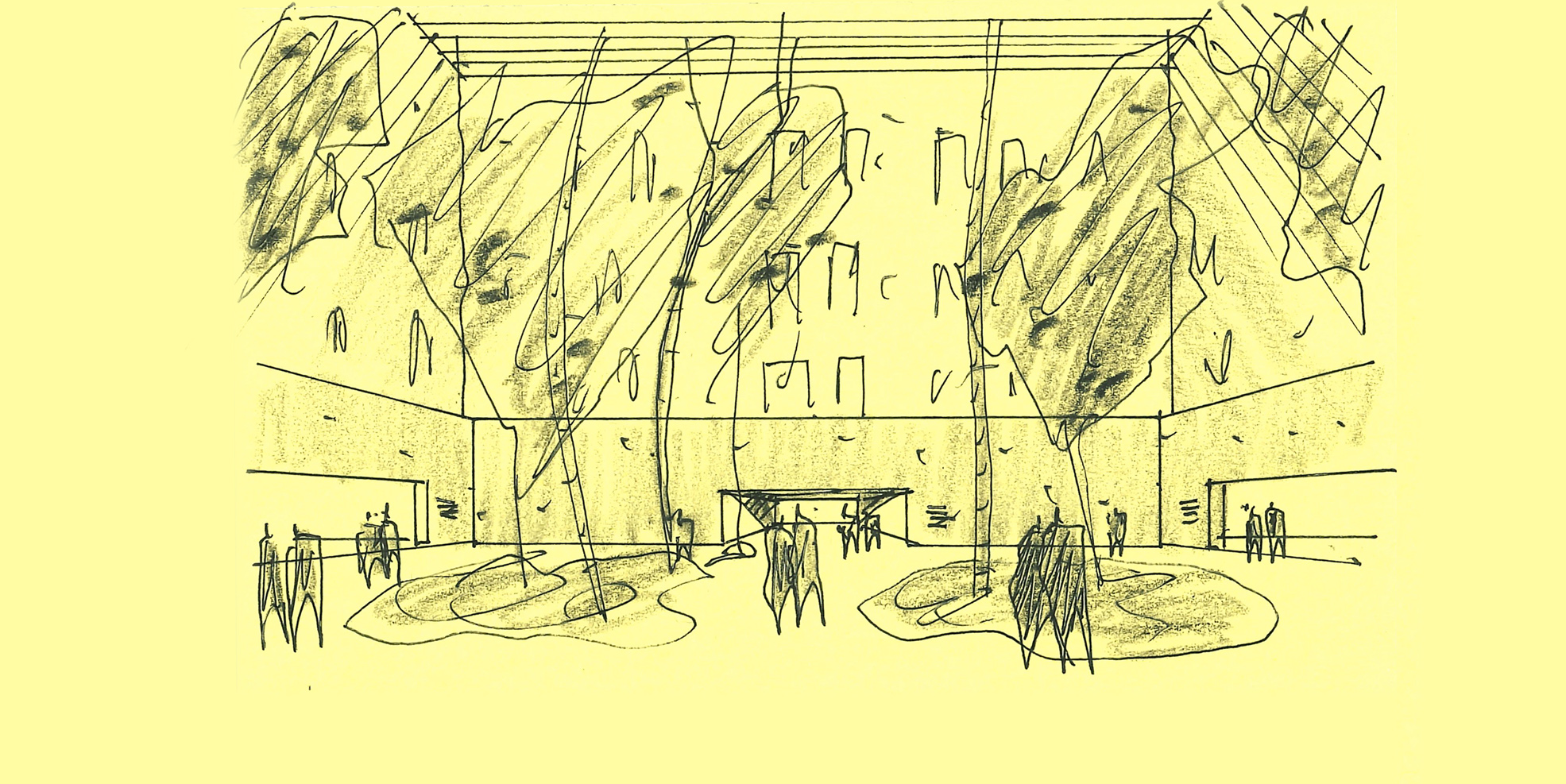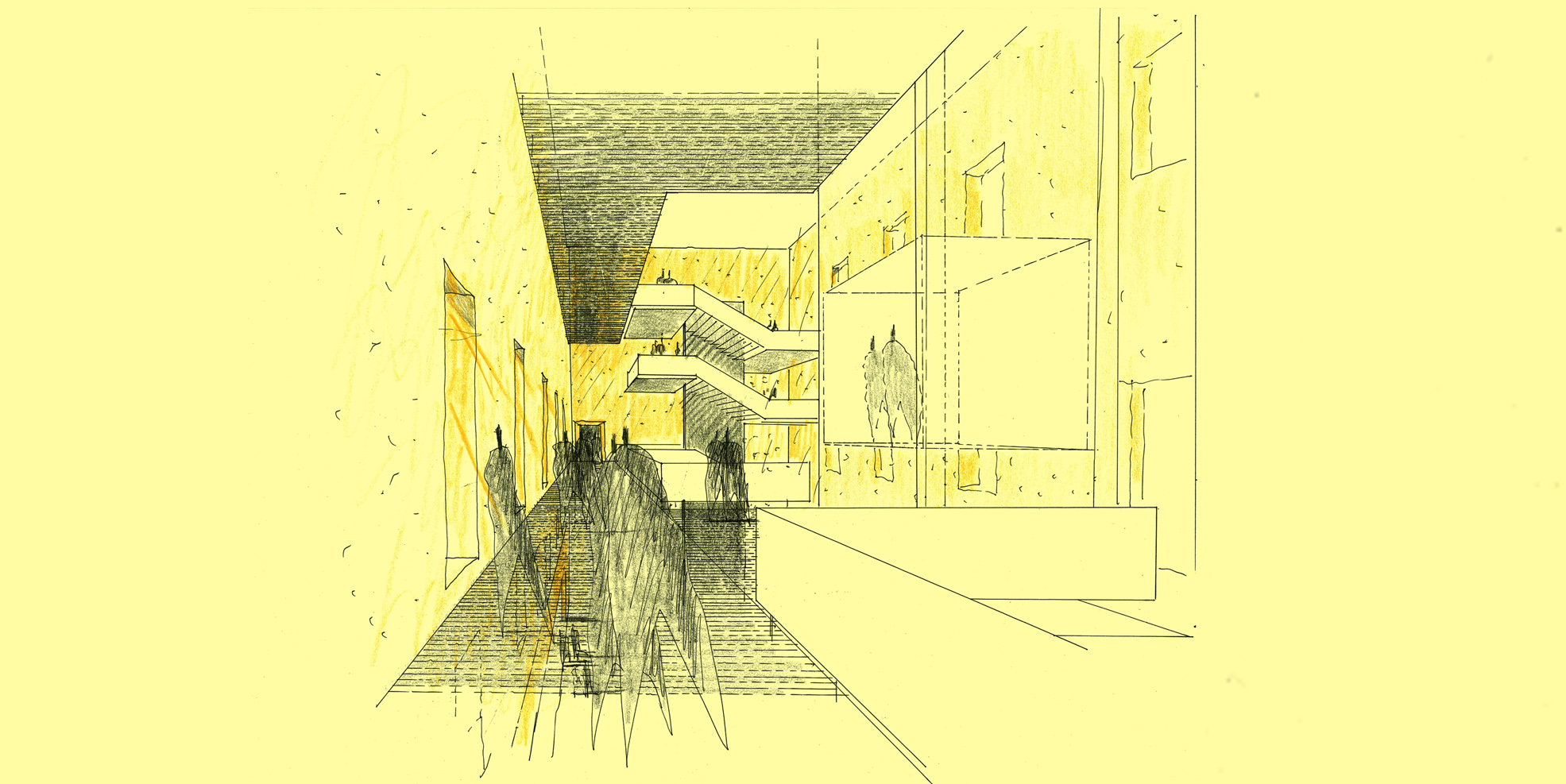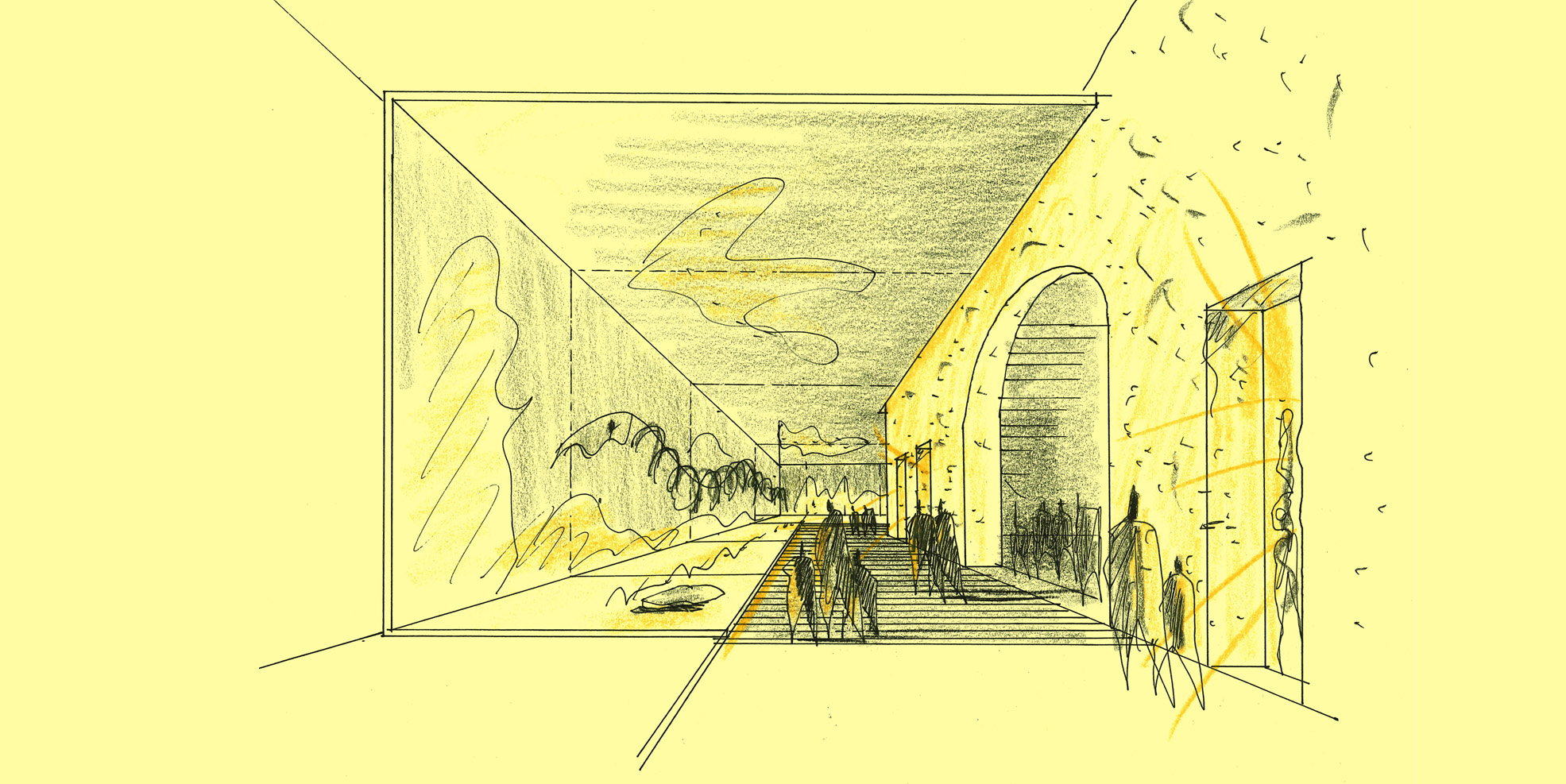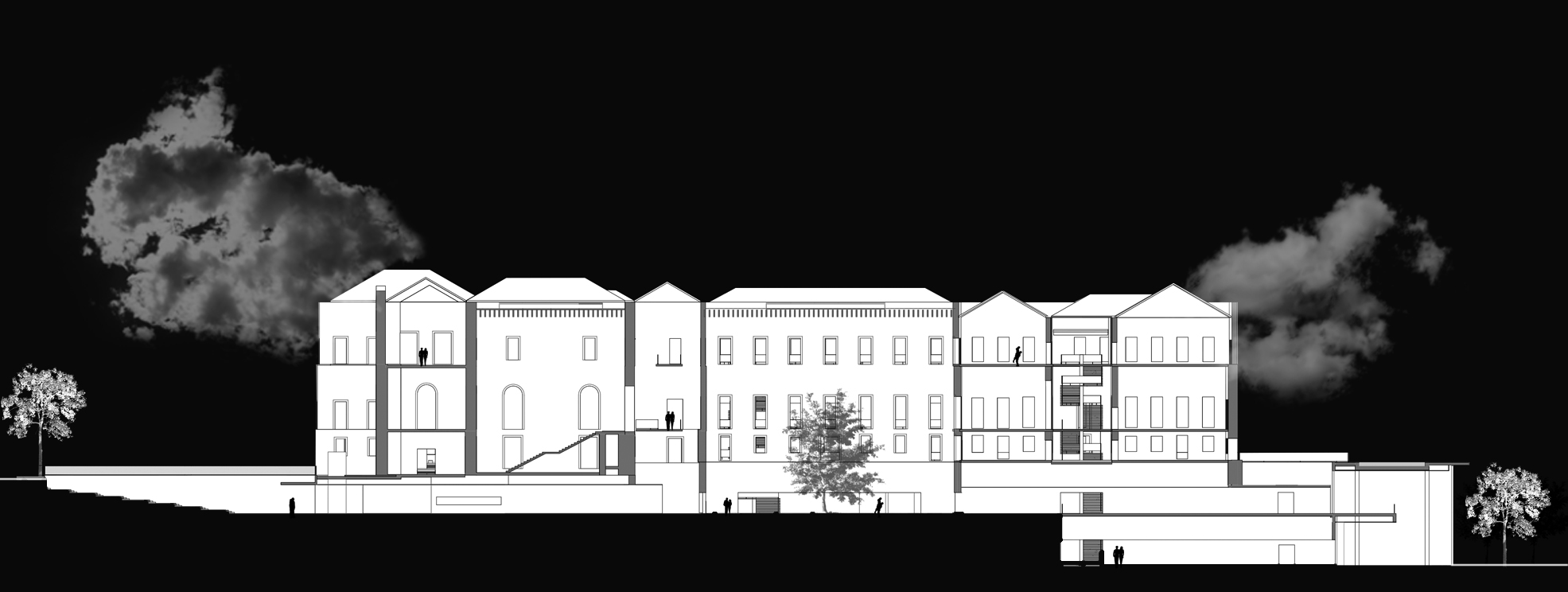The great fire of the national Museum in 2018 resulted in a big loos for Rio de Janeiro and for Brazil. To compensate this huge wound we cannot limit to renovating the building damaged by the fire, we must reconstruct his meaning and his relation to the world.
The project tries this path by proposing a new physical and metaphorical re-foundation through which to trigger the rebirth of the institution.
The new foundation starts from the terraced garden and develops below the central part of the building, crossing it generating a series of connected garden courtyards that lead to the new extension on the back located under the level of the ground floor and open to the park and to the city.
This new platform gives the restored building a new dignity transforming the museum spot in a new a modern Agorà for the culture with a strong civic value. Arriving at the top of the park we will not find only an restored but isolated building but an organic system of internal and external courtyards suspended above the city and perfectly integrated into the life of the park ( terrace garden, central court garden, princess garden, belvedere garden over the new platform) through the green terraces that surround it as in ancient buildings, this system of relation with nature is perfectly suited to a museum of science nature.
From a functional point of view the intervention is organized in a huge staircase that leads from the terraced garden to a large and modern sunken foyer capable of accommodating large influxes of people that the museum will have to welcome after its reopening. The new foyer is housed under the existing building. In the foyer there are all the services like the ticket office, the book shop, cafè etc..
In the center of the foyer we can find the meteorite “do Bendegó” to symbolize the theme of the rebirth that starts from this survived find. Putting all this spaces in this new position allow us to better preserve the original entrance spaces to the museum which will be fully restored to their beauty.
The foyer is connected to a memory space. From this position the basement allow us to see the spaces of the museum that will be left with the sign of fire in sight. It is the only part of the first block that will be not reconstructed as it was. In this way it will become a way to forever remember what happened in 2018. The original stone staircase in the court (covered by a new glass roof) will lead directly into this space assuming the very important task of narrating the drama and the rebirth of the institution.
From the foyer and the memorial space we arrive in the central court/garden that is hosted one level above the original level. The foyer is covered by a new a modern pergola and a glass roof that can be opened. On the four sides of the gardens we find four openings that connect to the different exhibition spaces of the museum. In front of the foyer is the connection with the spaces for temporary exhibition that is hosted in two levels inside the new platform her find place the new restaurant with access from the museum and from outside even when the museum is close. On the opposite side of the central garden there are connections with the stairs and the elevators that lead to the exhibition spaces housed on the upper levels of the restored museum.
local > rio de janeiro . brazil
project > august 2020
site area > 15.475,53m²
built area > 2.282 m²
-
architecture > studio mk27 . bricolo falsarella associati
architect > marcio kogan . bricolo falsarella associati
co-architect > eduardo glycerio . eduardo radomysler . marcio tanaka
restoration team > carlotta galeazzo . giorgio galeazzo
communication team > carlos costa . mariana simas . nathalia lima
-
render > miguel muralha
skecthes > filippo bricolo
The great fire of the national Museum in 2018 resulted in a big loos for Rio de Janeiro and for Brazil. To compensate this huge wound we cannot limit to renovating the building damaged by the fire, we must reconstruct his meaning and his relation to the world.
The project tries this path by proposing a new physical and metaphorical re-foundation through which to trigger the rebirth of the institution.
The new foundation starts from the terraced garden and develops below the central part of the building, crossing it generating a series of connected garden courtyards that lead to the new extension on the back located under the level of the ground floor and open to the park and to the city.
This new platform gives the restored building a new dignity transforming the museum spot in a new a modern Agorà for the culture with a strong civic value. Arriving at the top of the park we will not find only an restored but isolated building but an organic system of internal and external courtyards suspended above the city and perfectly integrated into the life of the park ( terrace garden, central court garden, princess garden, belvedere garden over the new platform) through the green terraces that surround it as in ancient buildings, this system of relation with nature is perfectly suited to a museum of science nature.
From a functional point of view the intervention is organized in a huge staircase that leads from the terraced garden to a large and modern sunken foyer capable of accommodating large influxes of people that the museum will have to welcome after its reopening. The new foyer is housed under the existing building. In the foyer there are all the services like the ticket office, the book shop, cafè etc..
In the center of the foyer we can find the meteorite “do Bendegó” to symbolize the theme of the rebirth that starts from this survived find. Putting all this spaces in this new position allow us to better preserve the original entrance spaces to the museum which will be fully restored to their beauty.
The foyer is connected to a memory space. From this position the basement allow us to see the spaces of the museum that will be left with the sign of fire in sight. It is the only part of the first block that will be not reconstructed as it was. In this way it will become a way to forever remember what happened in 2018. The original stone staircase in the court (covered by a new glass roof) will lead directly into this space assuming the very important task of narrating the drama and the rebirth of the institution.
From the foyer and the memorial space we arrive in the central court/garden that is hosted one level above the original level. The foyer is covered by a new a modern pergola and a glass roof that can be opened. On the four sides of the gardens we find four openings that connect to the different exhibition spaces of the museum. In front of the foyer is the connection with the spaces for temporary exhibition that is hosted in two levels inside the new platform her find place the new restaurant with access from the museum and from outside even when the museum is close. On the opposite side of the central garden there are connections with the stairs and the elevators that lead to the exhibition spaces housed on the upper levels of the restored museum.





